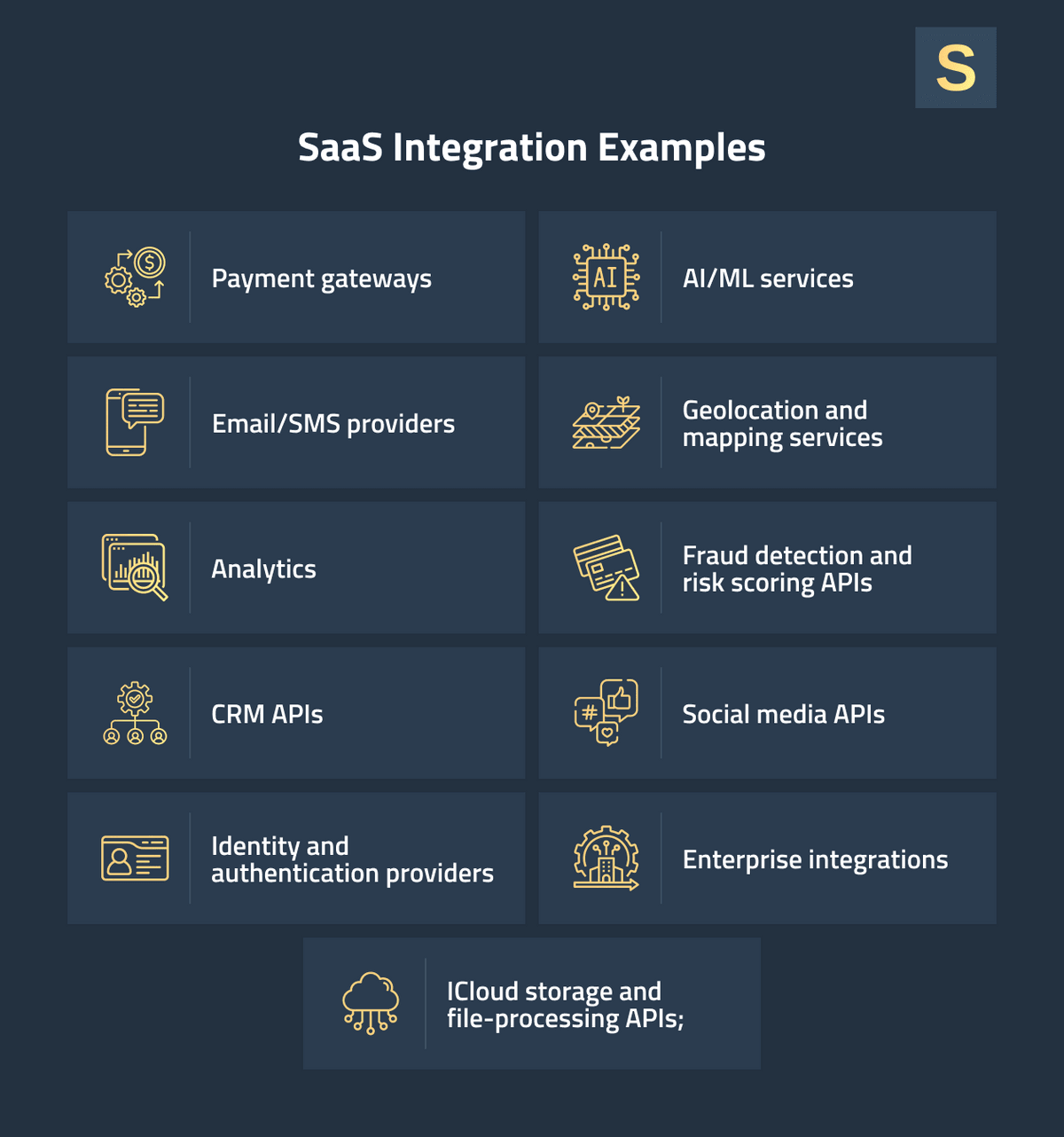To most first-time founders, estimating SaaS product development costs often seems like a black box. Without a software background, it’s difficult to imagine what determines the cost breakdown. In fact, there are significant variations in SaaS app development costs based on features, technology used, and team composition.
For instance, a simple micro-SaaS tool would cost around $10K–$25K, while a feature-rich platform may exceed $140K–$150K.
In this article, we explain how to estimate SaaS product development costs so you can plan your budget more effectively.
SaaS Development Cost Breakdown

In general, building SaaS applications requires several stages, each consuming a portion of the budget. A rough rule-of-thumb breakdown might be as follows.
Discovery & Planning
Typical duration: 1–2 weeks
Percentage of total cost: 5–10%
During this stage, the requirements are defined, the idea is checked against market needs, and the high-level architecture is planned. Typically, that would take about 70–160 hours. The discovery phase helps to avoid scope creep and wasted work.
UI/UX Design
Typical duration: 1–4 weeks
Percentage of total cost: 10–15%
At this stage, designers create wireframes, mockups, and interactive prototypes to ensure a user-friendly interface. The typical design work can take 120–170 hours. It's about intuitive layout and branding so users can quickly understand the app and engage with it effortlessly.
Front-End Development
Typical duration: 1–3 months
Percentage of total cost: 20–25%
Front-end developers implement the user-facing interface with HTML/CSS, JavaScript frameworks, and mobile UI. In the simplest MVP, this could be done even faster with AI automation. The timeline depends on the number and complexity of features.
Back-End Development
Typical duration: 2–4 months
Percentage of total cost: 25–30%
This covers server-side logic, APIs, database design, authentication, and integrations. This is often the most time-consuming stage. Backend development requires deep technical expertise and an understanding of how to align business needs with technological solutions. Well-structured backend logic ensures the reliability, scalability, and security of your SaaS application.
Testing & QA
Typical duration: Ongoing
Percentage of total cost: 10-15%
Testing runs throughout development. This includes unit testing, integration testing, user-acceptance testing, performance checks, and security audits. Early and frequent testing saves money through early detection of bugs. Setting up automated tests can greatly speed up the process and reduce costs.
Infrastructure & Hosting
Typical duration: Ongoing
Percentage of total cost: 5-10%
Infrastructure elements such as cloud servers, CI/CD pipelines, containerization, and monitoring tools usually come with a modest upfront cost. Setting up a proper DevOps environment can take a few weeks, depending on the complexity. After that, the main ongoing expenses are hosting, cloud usage, and monitoring fees.
Maintenance & Updates
Typical duration: Ongoing
Percentage of total cost: 15-20%
After launch, you need continuous maintenance: bug fixes, security patches, performance tuning, and new features. Support and upgrade costs may reach $10,000-$20,000 per month once user numbers grow and systems become more complex. For smaller setups, these costs are typically much lower.
Factors that Affect SaaS Development Cost
The final price of a SaaS product depends on many variables. Each of the factors below can drive up or pull down the estimate. Our recommendation is to start by making a list of feature requirements and considering each aspect to generate more realistic quotes.
Project Scope & Feature Complexity
The breadth of functionality is often the biggest cost driver. A tool with a narrow focus, such as a simple task manager, costs considerably less than a full-featured platform like CRM with real-time analytics, etc. The essential features, such as user management or basic CRUD operations, are relatively inexpensive. Adding complex features requires significantly more development time. They include:
- Real-time collaboration;
- AI/ML components;
- Custom reporting;
- Multi-tenancy architecture;
- Workflow automation engines;
- Offline-first mode;
- Advanced search and filtering;
- Complex user roles & permission trees;
- Integrations and orchestration layers;
- Multi-language localization;
- Custom dashboards and visualizations;
- Custom admin panels.
Reducing feature scope is one of the simplest ways to lower SaaS product development costs. It’s a good practice to start with a core set of features and gradually add new functionality.
Read also: How to Build Real-Time Collaborative Applications
User Roles & Permissions
Multi-level roles, such as admins, users, and guests, add another layer of complexity. Each role may require its own UI, workflows, and permission checks. For example, implementing role-based access control and an admin dashboard adds extra frontend and backend work.
Technology Stack
The choice of languages, frameworks, and databases can also affect the cost of developing a SaaS platform because it impacts developer availability and licensing. Using popular open-source stacks (e.g., React/Angular, Node/Python, PostgreSQL) generally keeps costs low. Specialized or licensed technologies (such as certain BI tools or backend frameworks) increase hourly rates. The more modern or niche the stack, the harder it may be to find developers, driving up rates.
Read also: SaaS Trends 2025: Key Insights for SaaS Tech Leaders
Third-Party Integrations and APIs
Integration with third-party services accelerates the development process. However, it can also add licensing fees and require additional coordination time.

For example, Stripe or Twilio can be integrated smoothly in most cases, but custom integrations with enterprise systems may be expensive. Integrating APIs can lower the cost of building a SaaS app and accelerate development, but they do come with ongoing maintenance costs.
Security and Compliance
SaaS applications in regulated industries require additional security measures:
- HIPAA/GDPR/PCI-DSS compliance;
- Audit logging;
- Role-based access control (RBAC) and permission models;
- Identity and Access Management (IAM);
- Continuous vulnerability scanning and penetration testing;
- Legal reviews and security certifications.
Robust security requirements increase development time and may require professional consulting or legal services.
Performance and Scalability Requirements
In cases of high-volume usage or a large user base, the app architecture should be designed to scale. Multi-tenancy and high concurrency require significantly more upfront development effort. Scalability and the number of API integrations are key factors in application architecture. In other words, creating a rock-solid scalable system costs more than a simple app designed for low usage.
Cloud Infrastructure and Hosting
The hosting environment in which a product is deployed (AWS, Azure, Google Cloud, etc.) and its configuration are part of the SaaS development cost. A simple cloud setup may be inexpensive, but advanced configurations are more costly. These include the following:
- Kubernetes clusters;
- Advanced monitoring;
- Multi-region deployment;
- Auto-scaling configurations;
- Load balancing;
- CDN usage (Content Delivery Networks);
- Managed databases;
- Networking and security layers;
- Backups and disaster recovery;
- Logging and observability tools.
Luckily, the cloud's pay-as-you-go model means you generally pay only for what you use. Cloud services can start as low as $5–$20 per month per service.
Development Team Size and Location
Larger teams move projects faster but are more expensive per hour. Hiring senior developers increases costs while shortening the development timeline.
Outsourcing to regions with lower costs of living, such as Eastern Europe and India, is a good way to balance your costs. For instance, Eastern Europe rates are often $40–$80/hr versus $80–$160/hr in North America.

AI Integration
If you plan to implement AI features into your solution, then the SaaS development cost will go up. Examples include machine learning models, AI chatbots, OpenAI integrations, and other areas that require specialized expertise.
There are numerous AI in SaaS use cases, but often when integrating AI, teams miss some crucial elements that increase maintenance costs. The following checklist will help you avoid these pitfalls and optimize your budget. Feel free to download it here.

8 Effective Strategies of Cost Reduction
Now, let’s explore effective ways to optimize the budget without compromising quality. By combining these strategies, a startup can substantially lower the cost of developing a SaaS platform without sacrificing the robustness of the final product.
1. Leverage Pre-built Components and Frameworks
Using pre-built components can significantly reduce coding time and costs. For example, many common functionalities like authentication flows, UI widgets, and form validation are handled by community-tested components. We recommend a modular design and reusing existing components to speed up development and maintain consistency. This approach also makes scaling your app easier as the product grows.
2. Adopt Open-Source Technologies
Use open-source languages, databases, and tools where possible. Open-source solutions don’t have licensing fees. These can be:
- Linux;
- PostgreSQL;
- MySQL;
- Python;
- Node.js, etc.
In many instances, they have active support communities and extensive documentation. As our experience shows, the use of open-source software can dramatically cut the initial SaaS product development costs.
In contrast, proprietary tools require paid licenses and often tie you to a specific vendor. Examples include:
- Windows Server, macOS
- Microsoft SQL Server, Oracle Database
- MATLAB, Visual Studio (paid editions)
- Salesforce, Tableau, and more.
3. Use Cloud-Based Infrastructure
Deploy on cloud platforms, like AWS, Azure, and GCP, to avoid heavy capital expenditure on servers. The cloud provides scalable resources on demand. You pay only for the consumption, and scaling up or down is easy. It’s possible to save up to 40% on infrastructure costs by using cloud services.
4. Outsource or Augment with Remote Teams
Outsourcing development or using a mixed in-house/offshore team reduces labor costs. Outsourcing provides access to competitive rates without the overhead of in-house staff. For many startups, a reputable agency can produce high-quality work at roughly half the U.S. hourly rates.
5. Start with an MVP and Prioritize Features
Avoid building "nice-to-have" features in your first version. The approach of MVP-first means releasing a lean version ASAP and then adding features according to user feedback. This saves money as you avoid the development of features that might not actually be needed. It also helps with faster market entry.
6. Automate Testing and Deployment-CI/CD
Fewer human errors mean less time spent fixing problems later. Implement continuous integration/continuous deployment (CI/CD) pipelines and enable automated testing. Automated tests, including unit, integration, and end-to-end tests, catch bugs early at minimal cost.
7. Use AI-Assisted Development
Modern AI coding tools, such as GitHub Copilot and ChatGPT, can significantly accelerate software development. The key is balancing automation with human expertise. When used effectively, AI can perform tasks such as documentation, coding, and testing more quickly, while humans ensure quality, context, and strategic decision-making.
At Seedium, we apply a smart AI-assisted approach to startup software development and scaling. Our engineers carefully analyze which tasks can be automated and integrate appropriate tools into the development workflow. This approach has been shown to speed up development time by 20–40%, depending on project complexity.
8. Follow Agile Project Management
Use Agile/Scrum methodologies to manage scope and catch issues early. Frequent iterations and stakeholder reviews ensure you are building the right product without wasted effort. This doesn't necessarily reduce hours but maximizes value and prevents costly pivots later.
Contact Seedium for the SaaS Project Estimate
At Seedium, we assist startups and entrepreneurs with our SaaS app development services, helping you get the most value from your investment. Product discovery, architecture planning, UI/UX design, full-stack development, QA, ongoing support – we can do it all.
Moreover, we adopt an AI-assisted development approach to speed up the work and cut costs. Our developers apply generative AI tools to automate routine tasks and find errors as early as possible. We also maintain a library of prebuilt modules for authentication, payment processing, reporting dashboards, etc., which we can plug into your project. This allows us to focus less on generic coding and more on your unique business logic.
Want an accurate budget for your project? Contact us using the form below to tell us more about your requirements. We'll suggest cost-saving options and help you create a development roadmap to ensure sustainable success.




